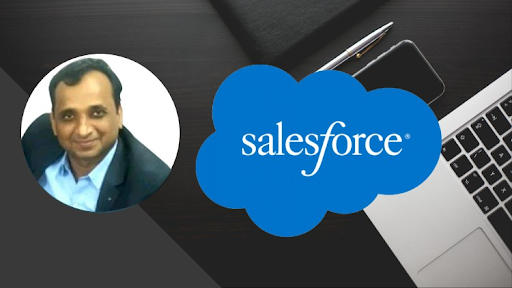If you're looking to embark on a journey into the world of Salesforce development, you've come to the right place. Salesforce is a powerful customer relationship management (CRM) platform that allows businesses to streamline their processes and engage with customers effectively. One of the key tools in the Salesforce developer's arsenal is Lightning Web Components (LWC), a modern framework for building dynamic web applications. This comprehensive guide will take you through the basics of LWC development in Salesforce, from setting up your development environment to building your first Lightning Web Component.
1. Understanding Salesforce Development
Before diving into LWC development, it's crucial to have a basic understanding of Salesforce and its ecosystem. Salesforce is a cloud-based CRM platform used by businesses to manage customer data, sales, and service operations. Salesforce offers various tools for customization and automation, making it a preferred choice for organizations worldwide.
2. Setting Up Your Salesforce Developer Account
To begin your journey as an LWC developer, you'll need a Salesforce developer account. These accounts are free and allow you to access Salesforce's development environment, also known as Salesforce Developer Edition. You can sign up for a developer account on the Salesforce website.
3. Introduction to Lightning Web Components (LWC)
Lightning Web Components (LWC) is a framework for building web applications on the Salesforce platform. LWC is based on modern web standards, such as JavaScript ES6 and HTML5, making it developer-friendly and efficient. It also follows a component-based architecture, promoting reusability and modularity.
4. Tools for LWC Development
To start building LWCs, you'll need a set of tools. Salesforce offers a powerful integrated development environment called Salesforce DX. It provides a suite of tools for coding, testing, and deploying LWC components.
5. Creating Your First Lightning Web Component
Let's dive into the practical aspect of LWC development. Creating your first Lightning Web Component is an exciting step. In Salesforce DX, you can use commands like sfdx force:lightning:component:create to generate the necessary files and structure for your component.
6. Understanding LWC JavaScript
JavaScript is the heart of any web development, and LWC is no exception. You'll need to grasp the fundamentals of JavaScript, especially the ES6 syntax, to work effectively with LWC. JavaScript is used to handle component logic, event handling, and communication with the Salesforce backend.
7. LWC HTML Templates
LWC components are defined by their HTML templates. These templates define the structure and layout of your component. You can use the HTML syntax to create dynamic and responsive user interfaces.
8. Styling Your LWC
A well-designed user interface is essential for a successful application. You can use CSS to style your LWC components and ensure they are visually appealing and user-friendly.
9. LWC Events and Communication
LWC components often need to communicate with each other or with the Salesforce backend. LWC provides a robust event system for this purpose. You can use events to send and receive data between components.
10. Deployment of LWC Components
Once you've developed your LWC components, you'll need to deploy them to your Salesforce organization. Salesforce DX offers deployment tools and commands to make this process smooth.
11. Testing LWC Components
Testing is a crucial part of any development process. Salesforce DX includes features for writing unit tests and ensuring the reliability of your LWC components.
12. Best Practices in LWC Development
To become a proficient LWC developer, it's essential to follow best practices. This includes adhering to coding standards, optimizing performance, and maintaining code quality.
13. Advanced LWC Features
As you gain experience, you can explore advanced LWC features like Apex integration, custom metadata, and Lightning Data Service. These features can enhance the functionality of your applications.
14. Integrating LWC with Salesforce Data
One of the strengths of LWC is its seamless integration with Salesforce data. You can fetch and display Salesforce records in your LWC components, providing users with real-time information.
15. Conclusion
In conclusion, getting started with LWC development in Salesforce opens up a world of opportunities for building powerful and dynamic web applications. With the right tools, knowledge, and practice, you can become a skilled LWC developer and contribute to the success of your organization.
Now that you’ve acquired valuable insights into LWC Tutorial with Hands-on Project Development in Salesforce, it’s time to embark on your coding journey. Get Access Now and start your salesforce adventure:
https://www.korshub.com/courses/lwc-tutorial-with-hands-on-project-development-in-salesforce-udemy
Happy learning!


Comments
Post a Comment